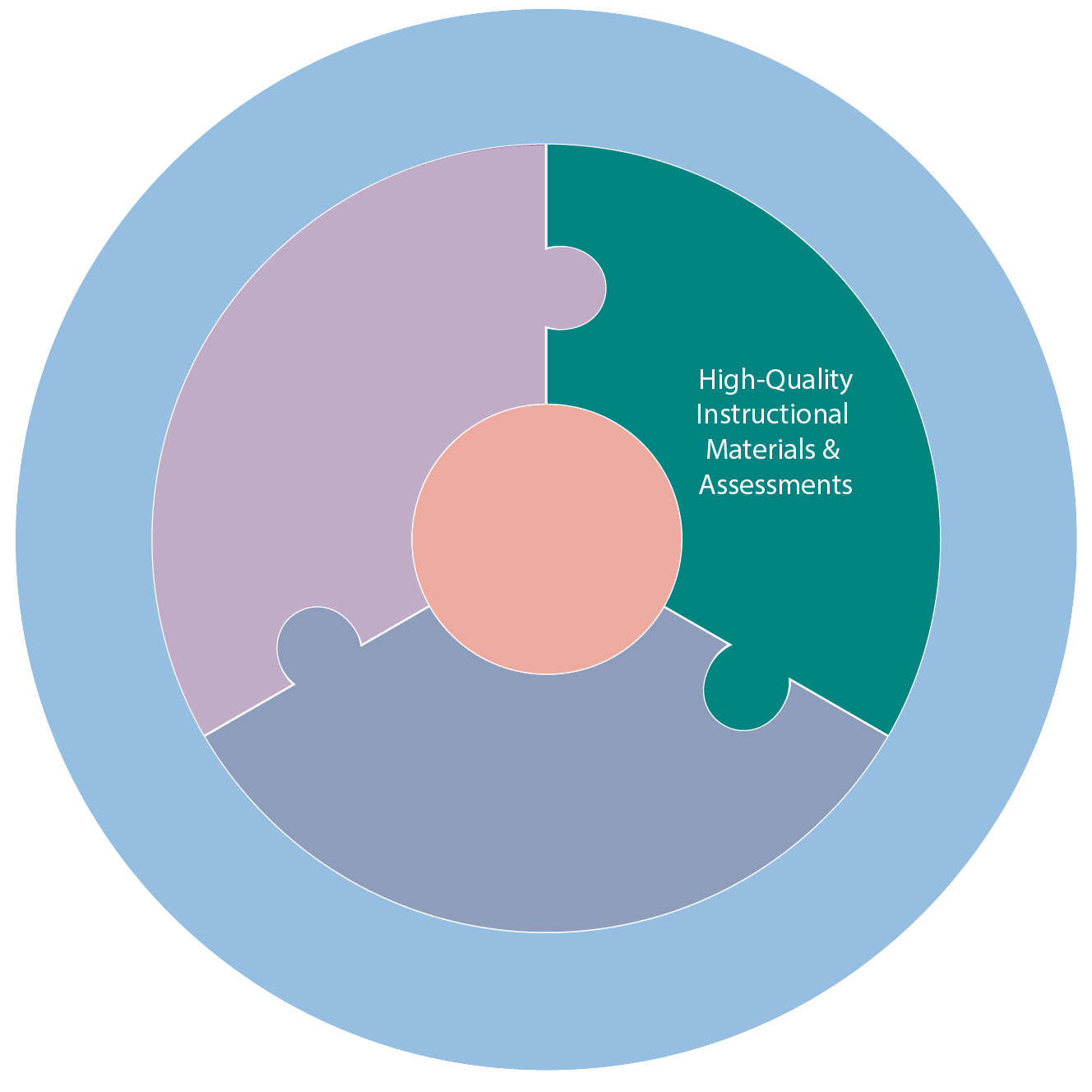Lever 4
High-Quality Instructional Materials and Assessments
All students engage daily with TEKS-aligned, high-quality instructional materials, and assessments that support learning at appropriate levels of rigor.

District Commitments:
District commitments describe what local education agencies do to ensure that schools are set up for success.
-
District policies support the effective use of standards-aligned, high quality instructional materials and assessments.
-
The district provides access to interim assessments aligned to the standards and the expected level of rigor.
-
When instructional materials are adopted, the district provides the campus with standards-aligned, high quality instructional materials that include the full unit and daily lesson plans, aligned assessments, scope and sequence, integrated supports to meet the needs of all students including special populations, and all necessary materials for implementation with fidelity.
-
When instructional materials are developed, the district provides tools and resources to support the development of unit and daily lesson plans, aligned assessments, integrated supports to meet the needs of all students including special populations, and all necessary materials for implementation.
-
The district ensures campuses have an assessment calendar aligned to the scope and sequence.
Essential Action
Essential Actions describe what the most effective schools do to support powerful teaching and learning. The first essential action listed under the priority is foundational — schools should address first in continuous improvement efforts, as they provide the foundation upon which the other essential actions develop.
4.1
FOUNDATIONAL ESSENTIAL ACTION
Daily use of high-quality instructional materials
-
Teachers have access to and use high-quality instructional materials that fully cover state standards, are aligned to research-based instructional strategies, and meet the needs of all students, including special populations.
-
Campus clearly outlines purpose of each assessment, when it is administered and how results are used to support student learning.
-
When instructional materials have been adopted and/or provided to teachers, campus leaders provide resources, training, and support for teachers to implement adopted instructional materials through internalization protocols, teacher planning time, and monitoring the rigor of taught lessons.
-
When instructional materials are developed by teachers, campus leaders provide resources and support teachers to develop units, lessons, and assessments that are high quality.

